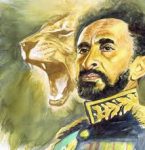Dead Body Count – My Tally So Far
“The only thing more fun than creating a character is killing one off.” I’ve said this more than once. But since I identify as a romance writer – rather than, say, a crime novelist – I’m more devoted to keeping characters alive and together. However, this week it occurred to me to tot up the ones I’ve offed. What’s my dead body count to date?
A dead body can enliven any narrative. I’ve long known it. One scene in my 17th-century historical romance And Heaven Too takes place in a theater. I summed up the play thusly:
“The King and his Subject was not a tragedy of the blood and thunder order for which audiences had a very keen relish. It did, however, have the requisite minimum of suicide and murder. And so at the end of the first act, there was indeed a corpse lying upon the stage for the spectators to gloat over.”
Good job, my imaginary playwright!
The title image for this blog is Judith Slaying Holofernes (1612) by Artemisia Gentileschi. This painting happens to play a central role in the plot of And Heaven Too. In the context of this blog, the painting neatly sets up my body count categories:
Is the killer male or female?
How about the victim: male or female?
Is the killing up close? Or impersonal?
Does the killing take place on stage? Or off stage?
Is it righteous? Or wrong?
I just counted them up. In 35+ stories I have a total of 19 plot-relevant dead bodies to categorize. Sure, a couple more characters die of natural causes. But still only little more than half the time I kill off a character.
I’m already disappointed!
Dead Body Count: My Killers and Their Victims
More disappointment. As I review my killers, I see they are mostly men. I had imagined having created more women taking a star turn on the killing stage. But I can count only five. And two of them are in one story, Buy Me Love. So my female killer count by story is low.

On the upside, all but one of my victims are men. In real life I don’t want men to be killed more than women – or anyone killed at all. However, in my stories, I have evidently stayed away from making women victims. And I’m glad about that.
As I review my killers, I have to mention dogs. In The Wedding Night, an angry dog is responsible for the death of his master – a crucial plot point. And in The Alpha’s Edge (the prequel to Buy Me Love) the same two dogs kill two different humans, and these actions are also crucial to the plot.
Without giving too much away, I can count among my killers one werewolf in his wolf form.
So my killers (and their victims) aren’t always human.
Dead Body Count: How, Where and Why
How. Only four of my characters die from a gun shot wound. Two shot from afar. Two at point blank range.
Other methods: slit throats. Asphyxiation. Strangulation. Mighty shoves against furniture or down a treacherous flight of stairs.
Which means that, on balance, I kill my characters up close. I’m happy that if I’m going to create a character I’m also going to kill him in a personal way.
Where. As far as where they are murdered, I seem to have hedged my narrative bets. I’ve dramatized ten of my murder scenes. The other nine I’ve set off stage, but the deaths nevertheless have a direct effect on the plot. So, sometimes you see ’em. Sometimes you don’t.
And now the Why. My ideal killer is Gentileschi’s Biblical Judith. She’s a strong woman who puts strength into slaying the invading general to keep her people free. Her actions are righteous.
Two of my female killers kill righteously. While seven of my male killers kill righteously.
Alas, my three other female killers are just plain murderers. As are the other seven of my male killers.
And their reasons for murdering? The usual: greed, passion, revenge.
It seems I’ve split the Righteous and the Wrong right down the middle. Does this say something about my world view? I really don’t know.
Final Thought: Why Kill One of Your Characters?
Good question.
Back to my apparent aversion for killing off female characters.
I’m aware of the real world. Just this past week the death of Sarah Everard in London on March 3 has sparked a global conversation about women’s safety on the streets. Everard was going about her life and “doing everything right.” And still she was the victim of a random kidnapping and killing.
I’m not able to change the real world, but I can ask myself, as a writer, why I kill a certain character. Sometimes killing a woman is the just the lazy narrative way forward. I’m thinking here of fridging. Definitely not my style.
Categorised in: Blog, Writing, Writing Inspiration
This post was written by Julie Tetel Andresen
You may also like these stories:
- google+
- comment



